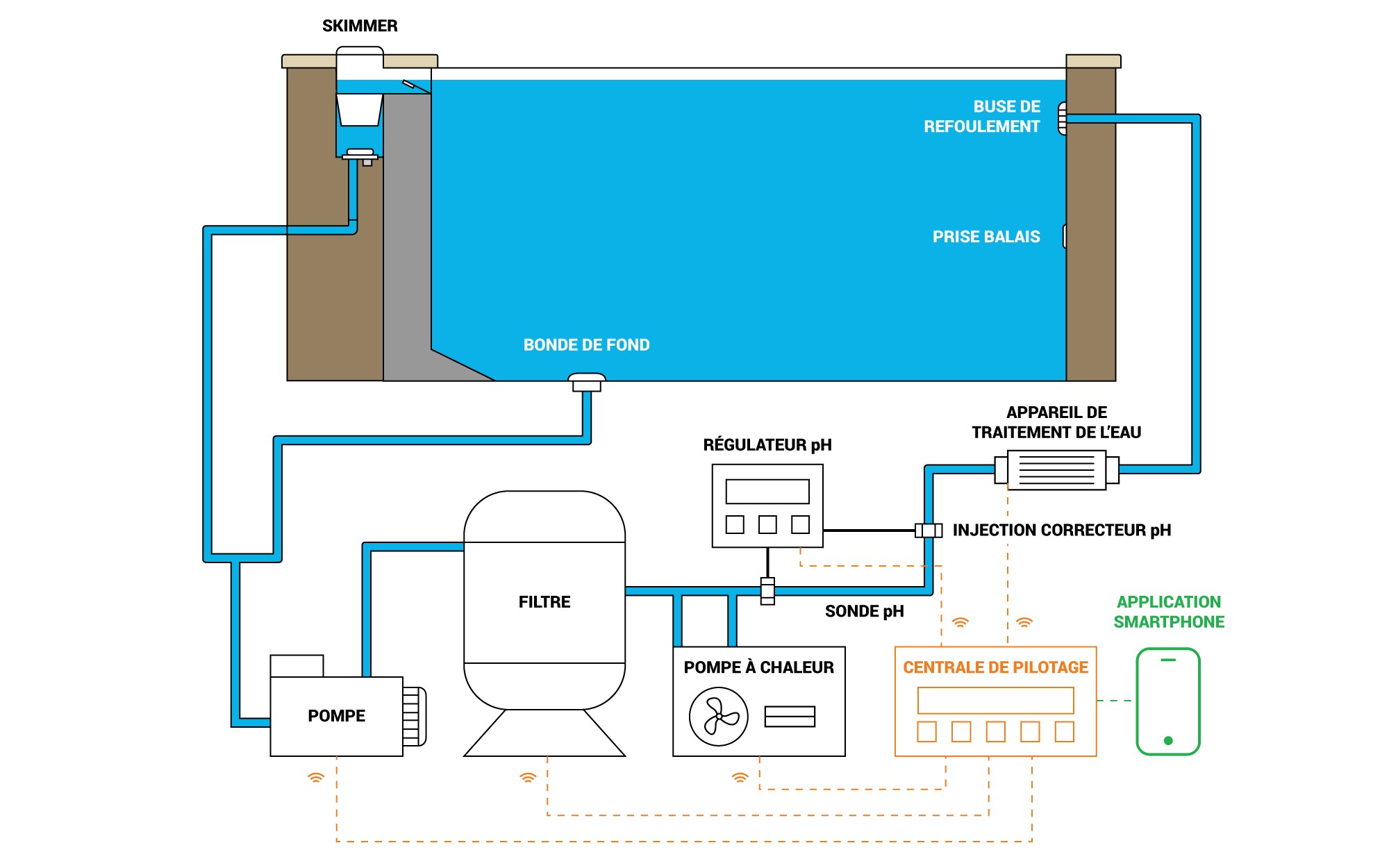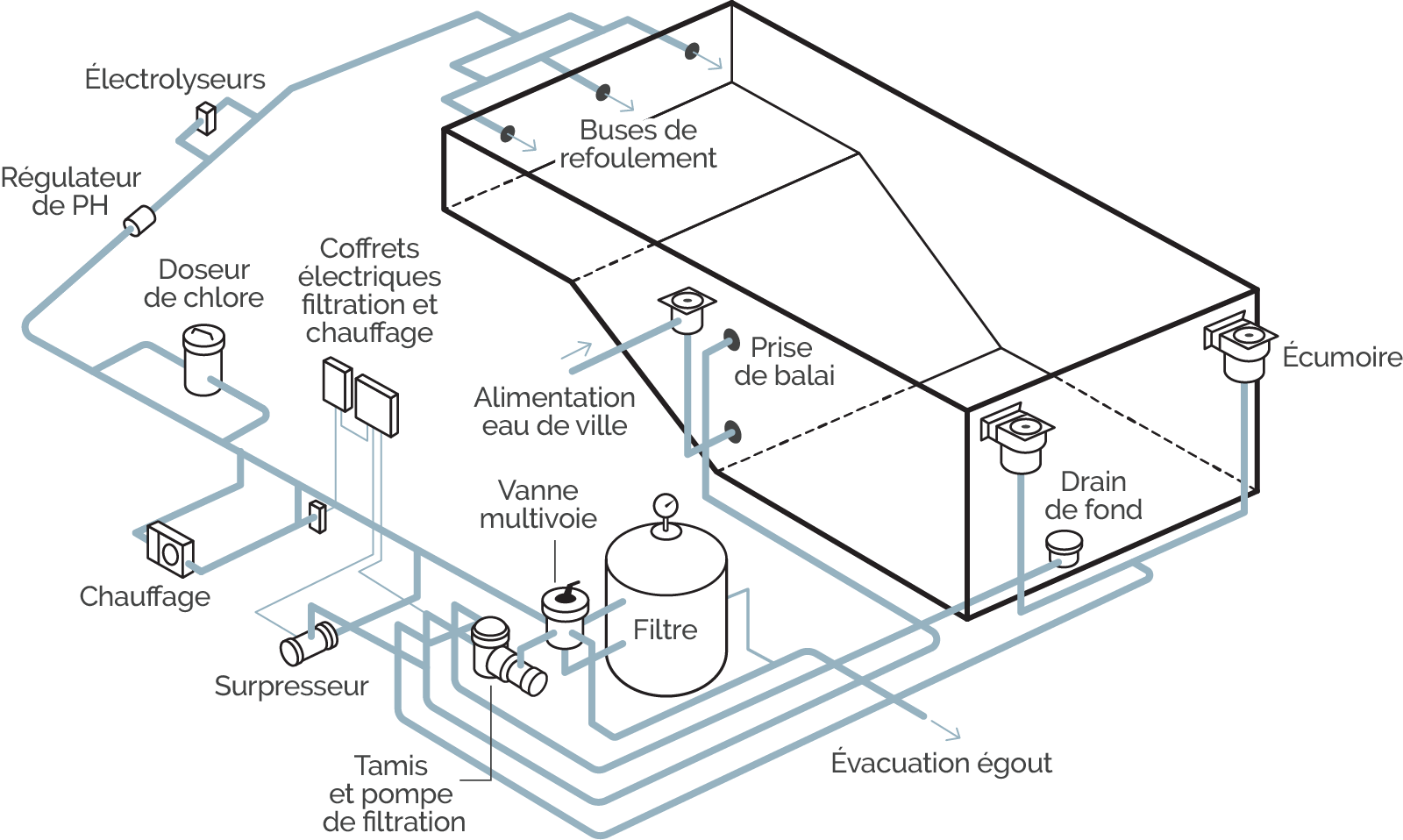Pool Filtration & Recirculation: A Complete Guide
Is your swimming pool a shimmering oasis or a murky mire? Understanding the crucial role of your pool's filtration system is the key to a consistently clean and inviting aquatic environment.
The heart of any well-maintained swimming pool is its filtration system. Often overlooked, this vital component is responsible for keeping the water clear, hygienic, and safe for swimmers. At the core of this system lies the filtration pump, also known as the water recirculation pump. This pump is the tireless worker, drawing water from the pool, sending it through the filter, and returning it, clean and refreshed, back to the pool. Without a properly functioning pump, the water quickly becomes stagnant, cloudy, and a breeding ground for algae and bacteria.
Beyond the pump, a comprehensive pool maintenance strategy involves various cleaning tools and techniques. Manual pool vacuums and robotic pool cleaners are valuable assets, providing targeted cleaning of the pool's floor and walls. Complementing these tools, specialized cleaning products designed for different areas, such as the walls, floor, and waterline, effectively remove dirt, debris, and organic matter. A proactive approach to pool care ensures a consistently pristine swimming experience.
One of the most critical elements in the construction or maintenance of a swimming pool is the correct positioning of the filtration valves. These valves are the gatekeepers of water flow, directing water through the various components of the filtration system. Precise valve placement is crucial for ensuring optimal water circulation and maintaining impeccable water quality. A well-configured valve system allows for efficient filtration, backwashing, and other essential maintenance procedures, contributing significantly to the pool's overall health.
How, then, does a multi-port or multi-position pool valve work? Such a valve is frequently located atop the filter (top-mounted valve) or on its side (side-mounted valve). These valves are available in different configurations, depending on the needs and size of the pool. The common configurations are 4-way to 7-way valves. They act as a central control point for the flow of water, allowing you to direct the water through different paths, such as filtration, backwashing, rinsing, and waste.
| Key Component | Function | Details |
|---|---|---|
| Filtration Pump (Recirculation Pump) | Draws water from the pool and sends it to the filter. | Essential for circulating water and ensuring that it passes through the filter, thus removing debris and contaminants. |
| Filtration Valve (Multi-port Valve) | Controls the direction of water flow within the filtration system. | Allows for different operational modes, such as filtering, backwashing, rinsing, and waste. |
| Filter | Removes dirt, debris, and contaminants from the water. | Various types exist, including sand filters, cartridge filters, and diatomaceous earth (DE) filters. |
| Cleaning Tools (Manual and Robotic) | Removes debris from the pool's surfaces. | Includes vacuums, brushes, and skimmers to keep the pool clean. |
| Cleaning Products | Remove dirt, debris, and organic matter from the pool. | Includes cleaners for the walls, floor, and waterline. |
You can use these components and cleaning tools to keep your pool clean and pristine
A pool is thoroughly cleaned when the entire volume of water passes through the filter. Understandably, the larger the water volume, the longer it takes for the water to renew itself. This is referred to as the recirculation or turnover time. The turnover rate is essential to the cleanliness of your pool.
Keep in mind that the daily filtration time then depends on the water temperature. The higher the temperature, the more time the pool will need to filter. This is because warmer water encourages faster algae and bacteria growth. Daily filtration is therefore crucial.
Dirty water is discharged to the sewer or an appropriate location. This process ensures that all contaminants are removed from the pool water.
A sand filter is equipped with a multi-port valve that controls the water flow. The common positions are filtration, backwash, rinse, waste, recirculation, and closed. Each setting serves a different function, allowing you to efficiently maintain and clean your pool.
The filtration or recirculation pump is a fundamental element of the technical room of the pool. It represents a new generation of equipment that undeniably improves water quality and bathing comfort. Modern pumps are often energy-efficient, quiet, and equipped with advanced features such as variable speed capabilities.
Water circulation in a pool is of utmost importance. The pump, filter, and valves work together to create a continuous cycle, where water is drawn in, cleaned, and returned. This ensures that the water is constantly moving, preventing stagnation and ensuring proper filtration.
The purification and quality of bathing water depend on the filtration system by 80%. This high percentage emphasizes the crucial role filtration plays in maintaining a healthy and enjoyable swimming environment. Proper filtration removes debris, contaminants, and organic matter, keeping the water clear and safe.
Additives and treatment products are responsible for the remaining 20%, including disinfection, sterilization, and what is commonly called water balance. Disinfectants, such as chlorine or bromine, kill bacteria and algae. Sanitizers sterilize the water and prevent the growth of microorganisms. Water balance refers to the correct levels of pH, alkalinity, and calcium hardness, which prevent corrosion, scaling, and eye irritation.
The recirculation position allows water to bypass the filter and return directly to the pool. This position is useful when you want to recirculate the water without filtration, such as when adding chemicals or performing maintenance tasks.
This position is also useful during maintenance or repair operations of the filtration system. This bypass allows you to keep the water circulating while working on the filter or pump without interrupting the water flow completely.
The multi-port valve allows for different operational modes, such as filtering, backwashing, rinsing, and waste. This flexibility simplifies pool maintenance and ensures efficient filtration.
A recirculation of your pool helps evenly distribute chemicals and reduce any potential aggregation. The benefits include better water quality, improved effectiveness of chemicals, and a more enjoyable swimming experience. The recirculation setting is also useful for various maintenance tasks.
To circulate the pool water without passing through the filter, you must use the "circulation" or "recirculation" position of your multi-port valve. This position allows the water to pass through the pump and then return directly to the pool via the return jets, without going through the filter. It's a good method to quickly mix chemicals or when you're working on a filter.
Whether you are cleaning the pool, resetting the filter, or checking the equipment, pool owners can facilitate this process by using the recirculation function. It helps in evenly distributing chemicals. Its also a good choice when the filter is out of order.
The valve is closed and does not allow any water to pass through the filter. This setting is useful when the filter needs to be isolated for maintenance or repairs.
This is a position that only exists on 6-way valves. This position closes off all water flow, which is useful for maintenance tasks or winterization.
Some filtration systems, especially for above-ground pools, only have 5 positions. The functions available depend on the design of the filtration system.
Adding the correct amount of chemicals is essential. Either pour the contents of the bucket directly into the skimmer, or in the case of an overflow pool, it will be necessary to pour the bucket while walking around the pool. The proper method depends on the type of pool and its filtration system.
For filtration, circulate the water in the pool, start the filtration system for at least 12 hours. The continuous running of the pump is essential for maintaining clean water.
This detailed information should provide a comprehensive overview of pool filtration systems, allowing you to understand how to maintain and enjoy your pool!
- Tamilblasters Features Content Risks What You Need To Know
- Linda Purl Happy Days Stars Career Romance With Patrick Duffy

Quelle filtration et traitement de la piscine. Tous les conseils pour

Schéma de filtration d'une piscine Plan de montage

Circulation et filtration de l’eau Piscines et pataugeoires